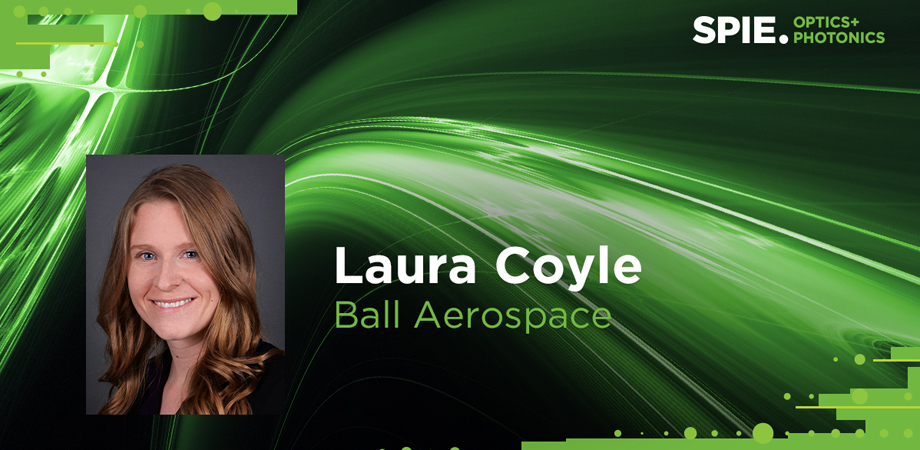In collaboration: The Habitable Worlds Observatory and the ULTRA-TM program

When talking about the collaborative projects between Ball Aerospace and NASA, Laura Coyle likes to paraphrase one of John F. Kennedy’s famous addresses: “We choose to do these missions,” she says, “not because they are easy, but because they are hard.”
“Achieving picometer-level stability for a 6+ meter segmented telescope seems like a daunting task — and it is,” says Coyle, a principal optical engineer at Ball Aerospace and the principal investigator for the NASA-funded ULTRA-TM program. “However, there has been incredible progress in many areas, including technology development, that shows a promising path to achieve this unprecedented level of performance, and will allow us to continue to search our Universe for signs of other life. Our community is eager to continue work on the Habitable Worlds Observatory (HWO), and I’m honored to play a small part in this worthy endeavor.”
Coyle will discuss her work with the HWO, the ULTRA-TM program, and other projects at the 2023 SPIE Optics + Photonics symposium in August.
How did you come to work on the ULTRA-TM project?
I was a member of the Ball Aerospace team that performed ground testing and on-orbit alignment and commissioning of the James Webb Space Telescope. That experience gave me a solid foundation in optical systems engineering as well as in wavefront sensing and control for large, segmented space telescopes.
As some of my Ball colleagues became involved in mission architecture analysis and technology planning for the LUVOIR mission concept, they included me in that work. I was excited to be involved in the earliest stages of NASA’s next flagship mission, and a key opportunity came in the form of a NASA-funded System Level Segmented Telescope Design and Analysis Study to identify technology gaps for large, segmented architectures. Ball led an industry team under the name “ULTRA” — Ultra-stable Large Telescope Research and Analysis Program — and I served as the co-investigator. That study was followed by another NASA-funded opportunity to develop key component technologies to close any gaps. The Ball-led team was awarded another contract for “ULTRA-TM” (for Technology Maturation), and I transitioned into the principal investigator role. As PI, I set the high-level technical direction for the program — with lots of input from my team – provided guidance and feedback on specific development efforts and coordinated the dissemination of our team’s results to NASA and the related community.
I can confidently say that I wouldn’t have had this opportunity without fantastic mentorship from technical experts both inside and outside of Ball, many of whom are either members of the ULTRA team or serve as subject matter experts. I continue to learn from them every day.
What led to your interest in astronomy/astrophysics? In working with telescopes?
As I was pursuing my undergraduate degree in physics, I was pretty sure I wanted to go to graduate school but didn’t know what specific area of the field. During my junior year, I attended a department colloquium and the speaker that week happened to be a member of the team that developed the approach to compensate the spherical aberration in the Hubble Space Telescope. That talk inspired me to apply to graduate schools in optics, and I chose the University of Arizona. Though I initially thought I wanted to pursue the quantum optics track, a tour of the university’s one-of-a-kind Mirror Lab during a prospective graduate student weekend completely changed my plan. I spent the next five years in Jim Burge’s Large Optics Fabrication and Testing group, developing alignment and metrology approaches for large mirrors for ground-based telescopes.
Now, at Ball Aerospace, which was also the company that built COSTAR to correct Hubble’s aberration — life has a funny way of coming full circle, I am able to apply those skills to NASA’s largest space-based telescopes, including the James Webb Space Telescope and the Habitable Worlds Observatory.
What aspects of the Habitable Worlds Observatory (HWO) interest or excite you the most?
Since I am an engineer and actively working on technology development for HWO, of course I am excited by the technical challenge of building a large observatory that is orders of magnitude more stable than anything that has come before. However, NASA builds these observatories because they are the only way to answer the most fundamental questions about our Universe: Where did we come from? Are we alone?
Watching the excitement and wonder that Webb has evoked in just its first year of operation illustrates how meaningful these large missions are not just for their ability to deliver paradigm-shifting science, but also to inspire humanity. It’s also exciting to think about the thousands of young people watching Webb with wonder, who will become the next generation of scientists and engineers that will bring HWO to life.
| Enjoy this article? Get similar news in your inbox |
|



